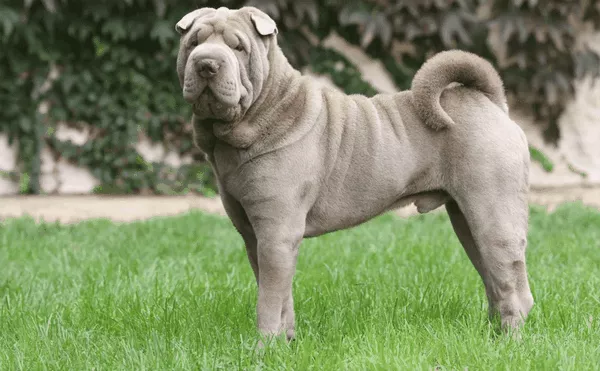Shar Peis are beloved for their distinctive appearance, characterized by their deep wrinkles and unique “hippopotamus” muzzle. While these features contribute to their charm, they also bring about specific health considerations. Understanding these unique health issues is crucial for Shar Pei owners to ensure the well-being of their furry companions. Among the various health concerns, one common symptom that often raises concerns among owners is shaking or trembling. In this article, we will delve into the reasons behind why Shar Peis shake, exploring both general causes and breed-specific health issues that may contribute to this behavior.
Common Reasons for Shaking in Dogs
Before diving into breed-specific concerns, it’s essential to understand the general causes of shaking in dogs. Shaking can occur due to various reasons, including cold temperatures, fear, excitement, or underlying illness. Dogs may shiver to generate heat when they are cold, or they may tremble in response to anxiety-inducing situations such as thunderstorms or fireworks. Additionally, excitement or anticipation can lead to trembling in some dogs. However, when shaking becomes frequent or persistent, it may indicate an underlying health issue that requires attention.
See Also:Are Chinese Shar Pei Big Dogs?
Specific Health Issues in Shar Peis
Shar Peis are prone to certain health problems attributed to their breed’s unique physical characteristics. Among these issues, Familial Shar-Pei Fever (FSF) stands out as a primary concern. FSF is a hereditary condition characterized by recurrent episodes of fever, accompanied by shaking, lethargy, and decreased appetite. These episodes can be distressing for both the dog and the owner, often requiring prompt veterinary intervention to manage symptoms and prevent complications.
In addition to FSF, Shar Peis are susceptible to ear infections due to their floppy ears and narrow ear canals. Ear infections can cause discomfort and lead to shaking of the head or scratching at the ears. Without proper treatment, chronic ear infections can progress and potentially result in more severe complications, including hearing loss.
Another common issue faced by Shar Peis is skin fold infections. The wrinkles that give Shar Peis their distinctive appearance also create an environment conducive to bacterial or fungal overgrowth, leading to skin fold dermatitis. This condition often manifests as redness, itching, and odor within the skin folds, prompting the dog to shake or scratch affected areas.
Symptoms and Diagnosis
Recognizing the symptoms associated with specific health issues in Shar Peis is crucial for early detection and treatment. For FSF, symptoms may include recurrent fever episodes, accompanied by shaking, lethargy, and decreased appetite. In cases of ear infections, signs to watch for include shaking of the head, scratching at the ears, redness or swelling of the ear canal, and discharge. Similarly, skin fold infections may present with redness, itching, foul odor, and moist or crusty skin within the wrinkles.
When presented with a shaking Shar Pei, veterinarians typically conduct a thorough physical examination, focusing on areas prone to health issues such as the ears and skin folds. Diagnostic tests, including blood work, skin scrapings, and ear swabs, may be performed to confirm the underlying cause of the shaking. In some cases, imaging studies such as X-rays or ultrasounds may be necessary to assess internal organs or joints.
Treatment Options
Treatment for shaking in Shar Peis varies depending on the underlying cause. In cases of FSF, management often involves administration of non-steroidal anti-inflammatory drugs (NSAIDs) to alleviate fever and discomfort during episodes. Long-term management may include immunosuppressive medications to reduce the frequency and severity of fever episodes.
See Also:Can Chinese Shar Peis Be Left Alone?
For ear infections, treatment typically involves cleaning the ears to remove debris and applying topical medications to combat infection. In severe or recurrent cases, oral antibiotics or antifungal medications may be prescribed. Proper ear hygiene and regular cleaning are essential to prevent future infections.
In the case of skin fold infections, treatment focuses on cleansing and drying affected areas to eliminate bacterial or fungal overgrowth. Topical medications, such as antimicrobial ointments or medicated wipes, may be recommended to reduce inflammation and promote healing. In severe cases, oral antibiotics or antifungals may be necessary to control infection.
Preventative Measures
While some health issues in Shar Peis may be hereditary or unavoidable, proactive measures can help reduce the risk of developing certain conditions. Maintaining a healthy diet, rich in essential nutrients, supports overall immune function and skin health. Regular grooming, including cleaning and drying of skin folds, helps prevent bacterial or fungal overgrowth and reduces the likelihood of skin fold infections.
Routine veterinary check-ups are essential for monitoring the health of Shar Peis and detecting any potential issues early on. During these visits, veterinarians can assess the dog’s overall health, conduct necessary screenings, and provide guidance on preventive care measures tailored to the individual dog’s needs.
When to See a Vet
Knowing when to seek veterinary care is crucial for ensuring the prompt diagnosis and treatment of health issues in Shar Peis. If a Shar Pei is shaking persistently or exhibiting other concerning symptoms such as fever, lethargy, or changes in appetite, it’s essential to consult a veterinarian promptly. Early intervention can help prevent complications and improve the prognosis for affected dogs.
Conclusion
Understanding the unique health considerations of Shar Peis is essential for ensuring the well-being of these distinctive dogs. Shaking behavior in Shar Peis can be attributed to various factors, including breed-specific health issues such as Familial Shar-Pei Fever, ear infections, and skin fold infections. By recognizing the symptoms, seeking timely veterinary care, and implementing preventive measures, owners can help their Shar Peis live healthy, happy lives free from shaking and discomfort.
Related Topics:






















